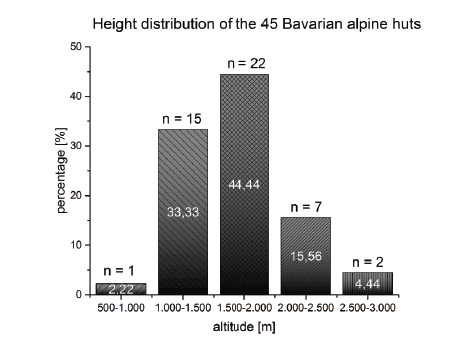
Figure 1: Height distribution and location of the 45 Bavarian alpine huts

Sascha Rödel1* Christian Platschek1 Robert Kolbitsch2
1University of the Federal Armed Forces Munich, Sanitary Engineering and Waste Management, WernerHeisenberg-Weg 39, 85579 Neubiberg, Germany*Corresponding author: Sascha Rödel, University of the Federal Armed Forces Munich, Sanitary Engineering and Waste Management, Werner-Heisenberg-Weg 39, 85579 Neubiberg, Germany, E-mail: sascha.roedel@unibw.de
In the research project entitled “Disposal of treated residues in Alpine areas”, the options for the disposal of residues (sludge) were investigated considering the existing ecological and economical perspectives. Issues of nature conservation, soil conservation, water conservation, agriculture and forestry, climate protection and waste management were included considering the legal and technical basis. In addition, hygienic and esthetic aspects were also taken into consideration. The energy and water supply and the wastewater and waste disposal systems were analyzed for 45 Bavarian mountain refuges. Experiences from operation of their supply and disposal systems were investigated. The problem of supporting decision- and policy-makers in managing issues related to waste water and disposal of residues was addressed within the context of this project. As a result, a guideline and a practical decision making concept for the disposal of residues from wastewater treatment in sensitive mountain regions were elaborated. This paper reveals insights into general assessment criteria that can support the quest for solutions to sustainable waste management in other protected areas and mountain regions. This study presents a guideline supporting Alpine Associations and technical and enforcement authorities while making decision on a sustainable residue disposal.
Sludge treatment and disposal; Wastewater treatment; Waste management; Alpine region; Mountain refuges
The German Alpine Association (Deutscher Alpenverein (DAV)) currently operates about 332 publicly accessible alpine huts spreading from low land to the high mountain region. Approximately 56% of these huts belong to category 1. Alpine huts of category 1 are mainly above the forest line and equipped with basic facilities. They can be reached with mechanical supports (e.g., motor vehicle) only in exceptional cases.
For alpine huts of category 1, the supply and disposal often are difficult and time-consuming due to very long drive paths. Therefore, the supply and disposal are only possible, and thus costly, by using a helicopter or material ropeway.
Mountain tourism causes punctual wastewater emissions at the available mountain huts and refuges, the type, construction, and processing of wastewater treatment facilities in mountain regions are influenced by various parameters and boundary conditions. More than half of the DAV-huts are beyond the forest line (above 1,700 m a.s.l.). These extreme locations often have poor accessibility and subsequently impede logistics and waste management at the sites [1]. At an altitude of more than 2,500 m a.s.l, the occurrence of permafrost needs to be taken into consideration because an absence of humus and vegetation layer complicates the disposal of sludge and compost.
Removal of residues from wastewater treatment from isolated alpine huts to the valley is sometimes possible only with high effort or not at all. Consequently, the residues are often disposed in the hut environment. Although the amount of waste occurring in the isolated and extremely located sites in alpine regions is usually small, treatment and disposal is an expensive and difficult undertaking. The problems and risks encountered in treating and disposing of residues from wastewater treatment in mountain regions have been studied extensively [2,3].
Approximately 12% of the alpine huts generate dewatered sludge (TSS>100 g/L) while the majority (61%) of the WWTPs at DAV facilities produce pump able wet sludge (TSS<100 g/L). Roughly one-fourth is equipped with a sewer system; and the wastewater (TSS<10 g/L) is discharged to WWTPs in the valley [1].
According to an estimation of the DAV, about 60% of the Bavarian alpine huts dispose their residues or fecal sludge close to the hut surrounding area. This disposal practice can have a negative impact on the vegetation and can cause the local erosion and degradation of the soil and flora. Besides this, the quality of present water resources in the sensitive areas can also be affected. If alpine pastureland (for sheep, cows, etc.) is located next to an alpine hut, hygienic issues can occur. Because of these reservations and in accordance with stricter requirements and legal regulations for sewage sludge disposal (e.g., Tyrolean Field Protection Act in Austria), the proper disposal of residues into the valley is increasingly required. Additionally, legal regulations are different between and even within countries of the Alps [4].
Based on the fact that alpine huts and their environment are very sensitive, due to their exposed location, toward the climate change, aspects such as resource protection and energy have to be considered. Owing to this, it is a major public concern to prevent any hazards to drinking water resources by the residues from wastewater treatment and those originating from wastewater of individual properties in the mountain regions. Considering the decline of water sources in some alpine regions, the protection of these resources is very important.
While deciding on an orderly treatment, the utilization and disposal of residues from the wastewater treatment and other factors, especially such as energy consumption of the treatment process and cumulative energy demand (“grey energy”) for transporting the treated residues, need to be evaluated.
With regard to climate protection in the Alpine region, environmentally friendly sludge treatment technologies and waste management strategies are required to reduce the operational and additional expenses for the utilization and disposal of the residues as well as for the transportation of the treated residues (for example, by helicopter). Thereby, it is possible to reduce climate-damaging CO2 emissions.
To ensure the sustainability in mountain regions, only a few international waste management concepts and guidelines exist (e.g., [5- 9]). For this reason and the reasons explained above, a guideline has been developed as part of a research project that demonstrates the options for the disposal of residues from wastewater treatment from ecological and economic perspectives.
The treatment and disposal procedure of waste sludge in extreme alpine environments and an integral evaluation of wastewater treatment systems at mountain refuges (for 100 European alpine huts) are presented in detail in [4,8] and [9]. The articles focus on solid waste management with an aim to the identification, quantification and critical discussion of operational issues (procedure and process technology), treatment efficiency (moisture percentage and volume reduction) and problems relating to waste management in mountain refuges. To describe the local disposal situation at alpine huts in Bavaria, elevations and data of previous research projects (e.g., [10-15]) were considered.
In the next step, the 45 Bavarian alpine huts (category 1), operated by the DAV, were investigated. Figure 1 shows the height distribution of these 45 Bavarian alpine huts.

Figure 1: Height distribution and location of the 45 Bavarian alpine huts
The focus of this investigation was on the inventory analysis of the wastewater, sludge and waste treatment, and disposal as well as energy supply at 45 alpine huts. Of the 45 alpine huts, 14 were examined on the spot. The frequency of supply and disposal, the present situation and effects on the wild animals, as well as the number of visitors were considered. All those factors have impact on the decision of residues disposal. Their supply and disposal infrastructure have already been documented systematically. For 37 huts, data and detailed information about the supply and disposal were collected and analyzed. In order to complete this task, a comprehensive questionnaire was created in advance. Following issues were queried:
One of the main objects of the investigation was to document and evaluate the present sludge disposal strategies (e.g. Figure 2) and the cost for the removal or evacuation of the residues. For this purpose, characteristics with regard to supply of materials (transportation technologies), energy (type of energy supply), and cost structures (investment costs, operating costs for transportation and energy supply) were inquired. Besides, the questionnaire also focused on the legal situation and official permit for a residue disposal.

Figure 2: Ways of sludge disposal (according to [16])
Based on the documentation of the present situation, decision bases for the treatment and disposal of the residues were developed. Therefore, the influencing criteria and factors that have a major economic impact on the treatment and disposal procedures of the residues were investigated. Moreover, climate and environment related effect based correlations were analyzed. In detail, following factors and aspects were considered:
Then, workshops with the representatives of the authorities, consulting engineers and the Alps associations were carried out to define the evaluation criteria for an orderly disposal of the treated residues. Accordingly, the main objective of these workshops was a practical relevance and legal background. For the determination of the assessment criteria, the spreading of the sewage sludge or residues from the wastewater treatment in the alpine hut surrounding was evaluated by applying nature conservation-motivated instruments. For this purpose, the geological mapping of biotopes in the Bavarian Alps (Alpenbiotopkartierung (ABK)) was used to identify ecologically valuable areas.
The assessment criteria are summarized in a flow chart reflecting both, public interests, which are represented by authorities (nature conservation, water conservation, soil conservation and agriculture, forestry and waste management) as well as climate protection, cost effectiveness of the transport systems, wastewater and sludge treatment technologies and local boundary conditions.
Table 1 shows the different sludge treatment technologies implied in the 37 Bavarian alpine huts, which were investigated. It follows that more than 27% huts does not apply any sludge treatment. In most cases, the sludge is released into the valley (21.62%). Sixteen Bavarian alpine huts treat the residues from wastewater treatment by using rotting technology, humification plants or sludge-drying beds. Only three alpine huts have filter bags systems. The average quantity of dewatered and dried sludge amounts between 0.2-2 m3 per year (reduction of volume (up to 70-90%) and mass of wet sludge (water content: >90%) by using an appropriate sludge treatment technology).

Table 1: Sludge treatment technologies at Bavarian alpine huts
The wastewater and sludge treatment technology at an alpine hut has a direct impact and influence on the disposal procedures of the residues from the wastewater treatment. The different disposals routes or procedures implied in the 37 Bavarian alpine huts are illustrated in table 2. Almost half of these 37 alpine huts spread their residues in the hut surrounding area. In 27% of the huts, the residues are evacuated via a vehicle or helicopter. Approximately 11% use a material ropeway to evacuate the residues (e.g. Figure 3). The available and actually used transport systems are shown in figure 4. A comparison between figure 4 and table 2 demonstrates that not in every case the disposal procedures are determined by the existing transport systems because of logistical and economic reasons.
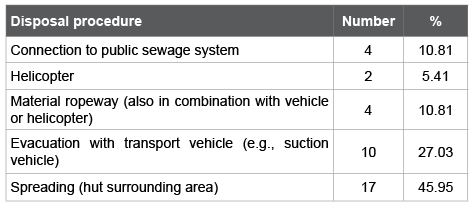
Table 2:Disposal procedures of the 37 Bavarian alpine huts

Figure 3: Material ropeway
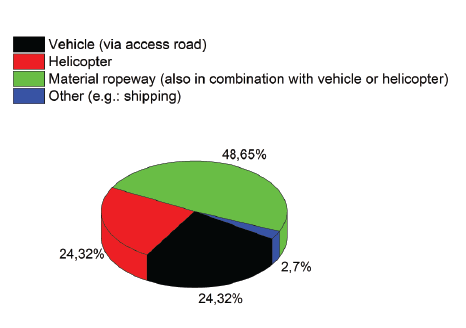
Figure 4: Transport systems of the 37 Bavarian alpine huts (category 1)
There is no evacuation of residues from wastewater treatment or sludge necessary, if an alpine hut is connected to a sewer pipe. The simplest and most cost-efficient disposal procedure is frequent evacuation or removal with a suction vehicle. The disposal procedure requires a well-developed access road to the alpine hut and storage of the wastewater sludge in multicompartmental septic tanks at the alpine hut. While using a helicopter to evacuate the residues from the wastewater treatment, enormous cost reductions are possible if supply flights and flights for disposal are combined. Empirical and indicative values for the transport and disposal costs are shown in table 3, which are net costs and in the lower range. The real costs may vary individually from the estimated values in table 3, depending on the transport distance, the altitude difference and the sludge disposal costs in the valley. The disposal and treatment costs (net costs) for dewatered and dried sludge from an alpine hut in a wastewater treatment plant in the valley are in the range of 100 to 200 Euros per ton (excl. transport costs) and can be assumed comparable to the costs in [18].

Table 3: Costs for the evacuation of the residues from wastewater treatment
In consideration of the respective local boundary conditions of an alpine hut, following assessment criteria and their exclusion and weighting characteristics were developed and defined:
In addition to the aforementioned public concerns, other relevant criteria should be taken into account and weighted against each other to evaluate and define the disposal procedure. This includes, for example, the location (altitude) of an alpine hut and climatic boundary conditions, which can limit a methodical disposal of residues in the alpine hut surrounding area. Moreover, the demands for land or land availability as well as hours of operation of an alpine hut have an influence on the disposal procedure. An increase in guests and visitors results in a higher quantity of wet sludge. Consequently, additional efforts and actions for a further sludge treatment are needed resulting in additional economical and operational expenses.
To preserve and protect alpine regions, a careful and smart recycling and disposal management of sewage sludge and residues from wastewater treatment is required. The decision about the fate of residues must be taken considering the individual cases and based on the consistent assessment criteria. A sustainable disposal procedure should focus on following issues when spreading residues or sludge in the alpine hut surrounding area:
To answer these questions, different parameters, characteristics, and criteria, such as, for example, the composition (organic and inorganic pollutants), consistency, and quantity of the residues, need to be investigated. In addition other parameters, the location and environment of the alpine hut (soil and subsoil, altitude, accessibility), also need some extent of attention. To evaluate a potential disposal procedure, suitable and proper transport systems, evacuation and packaging options and equipment for the residues have to be considered. Accordingly, attention should be paid to the legal requirements (e.g., hygiene regulations).
The evacuation or removal of the sludge or residues to the valley generally is possible and has to be a preferred strategy. The spreading of residues should be avoided, even if the alpine hut has only a material ropeway for the supply and disposal or accessible only by a helicopter. However, feasibility, reasonableness, and cost-effectiveness must be considered. These should be the first steps of evaluation if a spreading in the alpine hut surrounding area comes into question.
If no selected exclusion characteristics are valid and relevant (e.g., spreading wet sludge; spreading on permanent grassland and forested land), in the next step, weighting and balancing are required. Thus, the disposal procedures must be verified, whether for exceptional spreading in the alpine hut surrounding area; or at least, the evacuation of the residues in the valley should consider an overall ecologically sustainable, economically reasonable, and feasible disposal strategy. The balancing or assessment takes into account the selected sludge treatment technology, climate protection, hygiene, sanitation and costs for the treatment or evacuation of the residues from wastewater treatment (type of transport system, energy and effort for sludge treatment, etc.).
If the regulatory authority (e.g., District Office) using the evaluation and assessment process comes to the conclusion that the evacuation of sludge or residues is not reasonable and a spreading is a more ecologically sustainable, feasible, and economical disposal strategy, following requirements should be stipulated in the notification of permission:
The developed assessment criteria and their exclusion and weighting characteristics, which have to be considered for the evaluation of a proper disposal procedure, and the requirements, which have to be defined if a spreading is permitted, are summarized in table 4 and as a flow chart in figure 5.
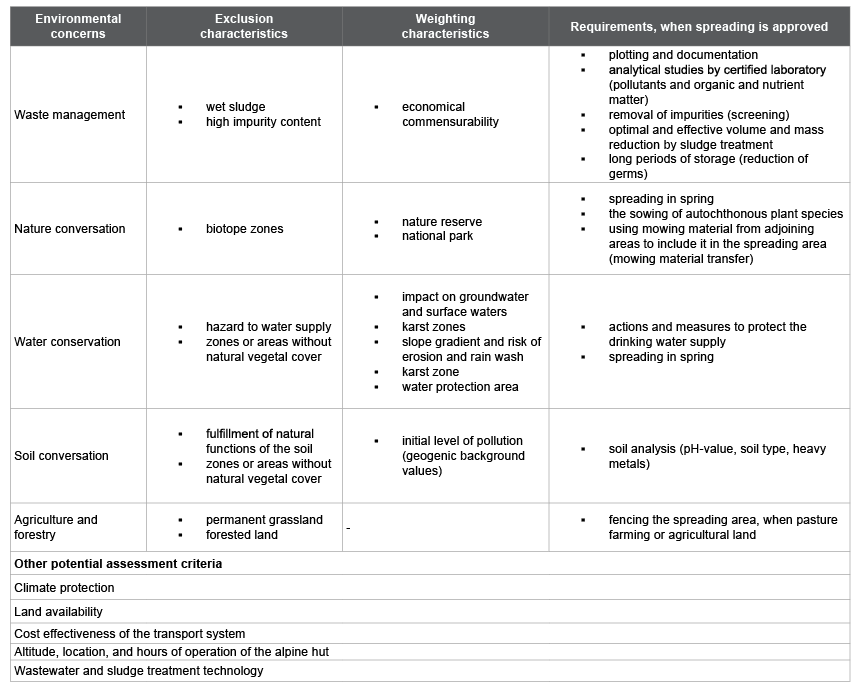
Table 4: Assessment criteria and requirements for a proper disposal procedure
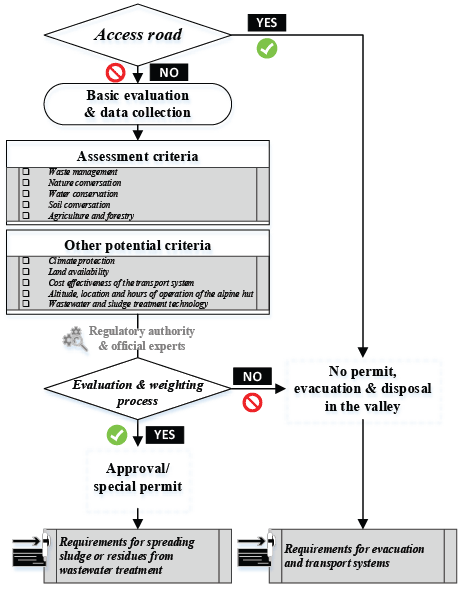
Figure 5: Flow chart for a proper disposal procedure of residues from the wastewater treatment
The assessment criteria (including exclusion and weighting characteristics) as well as the requirements for a spreading should be based on local boundary conditions, legal framework, and legal specifications.
In conclusion, the co-treatment of residues from alpine huts in large wastewater treatment plants in the valley is the most environmentally responsible method of disposal. Consequently, a controlled treatment and disposal is ensured. From the perspective of the hut landlord or operator, this disposal procedure or strategy often is technically hard to realize and is not economically feasible due to the absence of access roads. In this scenario, an individual decision-oriented assessment and weighting (decision on a by-case basis) of sludge disposal strategies considering the local boundary conditions and selected assessment criteria must be carried out.
This exemplary concept of the methodology developed for the disposal of residues from wastewater treatment would support the persons dealing with the complex problems of residue and sludge disposal. This guideline is mainly provided for Bavarian alpine huts of category 1. Taking into account the legal requirements of other countries (e.g., Austria and Switzerland), this guideline including the decision making concept would also be applicable for other users.
A renewal of official permits and an individual assessment are necessary to evaluate the sustainability and the potential risk of spreading sewage sludge or residues from wastewater treatment. The prevention of inappropriate and inopportune disposal strategies should be a part of a sustainable climate and environmental protection in the Alpine region.
The authors gratefully acknowledge the financial support of the Bavarian State Ministry of the Environment and Consumer Protection.
Download Provisional PDF Here
Article Type: Research Article
Citation: Rödel S, Platschek C, Kolbitsch R (2016) Guideline for Disposal of Residues from Wastewater Treatment in Sensitive Mountain Regions. Int J Water Wastewater Treat 2(3): doi http://dx.doi.org/10.16966/2381-5299.123
Copyright: © 2016 Rödel S, et al. This is an open-access article distributed under the terms of the Creative Commons Attribution License, which permits unrestricted use, distribution, and reproduction in any medium, provided the original author and source are credited.
Publication history:
All Sci Forschen Journals are Open Access